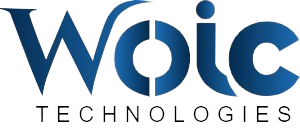Monitoring and performance optimization are essential practices in maintaining the efficiency, reliability, and scalability of computer systems, especially in complex and high-demand environments.
Monitoring
Monitoring refers to the continuous observation of a system’s health, performance, and behavior. By tracking key metrics such as CPU usage, memory consumption, disk I/O, network traffic, and application-specific metrics, monitoring allows system administrators and developers to detect anomalies or potential failures early. This proactive approach can prevent downtime and ensure smooth operation.
There are two main types of monitoring:
- System Monitoring: This involves checking hardware components like the CPU, memory, storage devices, and network interfaces. Tools like Nagios, Zabbix, and Prometheus can help monitor these aspects, providing alerts when thresholds are exceeded or anomalies are detected.
- Application Monitoring: Here, the focus shifts to the performance of specific applications or services, ensuring they run efficiently and without errors. Tools like New Relic, Datadog, and AppDynamics help track application-specific metrics such as response time, transaction rates, and error rates.
Performance Optimization
Performance optimization is the process of improving the speed, responsiveness, and resource efficiency of a system. It aims to enhance user experience, reduce operational costs, and improve scalability. Here are some key areas for optimization:
- Code Optimization: Analyzing and optimizing code can help reduce bottlenecks. Profiling tools like Xdebug (for PHP) or Py-Spy (for Python) can identify inefficient code paths that consume excessive resources.
- Database Optimization: A poorly performing database can degrade system performance. Optimizing database queries, adding indexes, and regular database maintenance (like defragmentation) are essential for improving database speed.
- Caching: Implementing caching mechanisms (e.g., Redis or Memcached) helps reduce the load on databases and improves response times by storing frequently accessed data in memory.
- Load Balancing: Distributing traffic across multiple servers ensures that no single server is overwhelmed. This can be done using software solutions like HAProxy or cloud-based load balancing services.
- Resource Management: Ensuring that the system’s resources (e.g., CPU, memory) are used efficiently, with proper allocation and cleanup of unused resources, can prevent slowdowns.
Conclusion
Monitoring and performance optimization are intertwined and crucial to maintaining an optimal computing environment. By continuously monitoring system health and implementing performance optimization strategies, businesses can deliver reliable and efficient services, reduce downtime, and prepare for future scalability needs.



